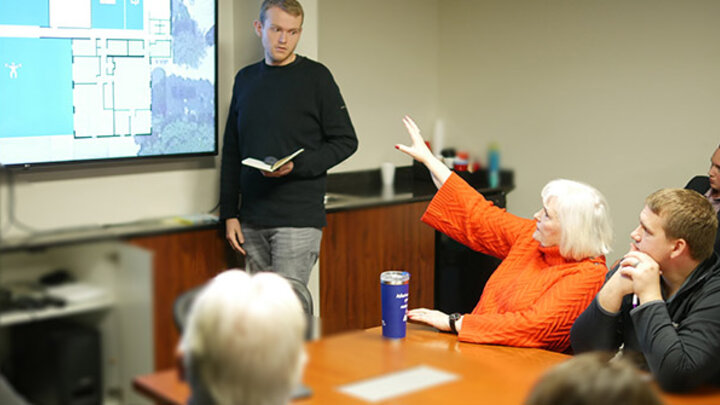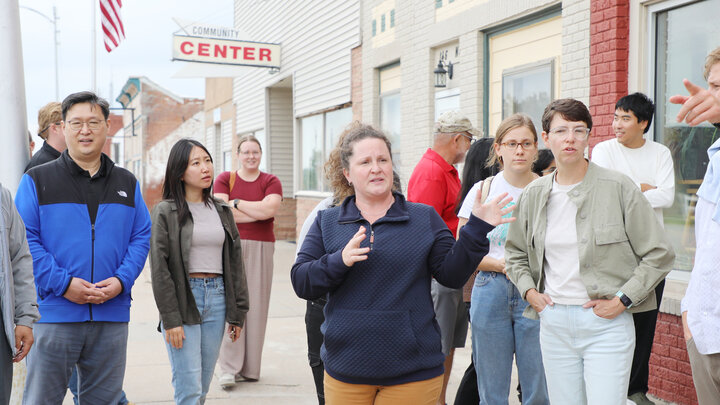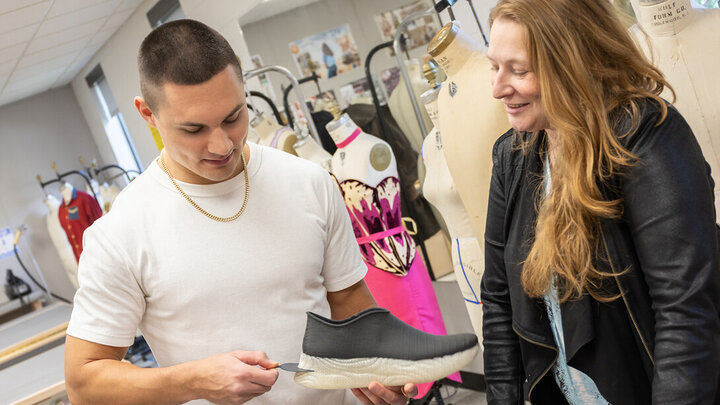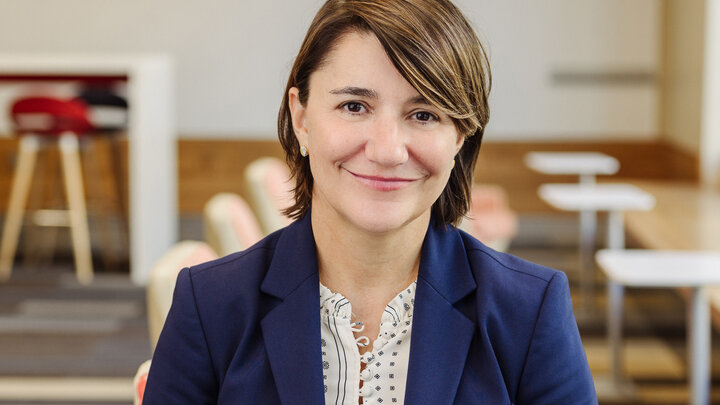Some architecture student projects are designed to be theoretical, some to be built and some to explore the possibilities of what could be. For as long as there has been a University of Nebraska, community leaders and non-profits have turned to academia for innovation and inspiration. Recently, College of Architecture Healthcare Design Seminar students partnered with the Saunders Medical Center (SMC) to research options for a new parcel of land acquired by the center in downtown Wahoo, Nebraska. By the end of the semester-long project, each student proposed a facility idea based on relevant healthcare issues facing the community.
According to architecture seminar instructor Lloyd Shenefelt, who holds a Merle and Trula Bachman Professorship of Health Care Design, students started the project by researching health issues impacting Nebraska and the Great Plains. They focused their research on the region’s geography, geology, demographics, history, farming practices, etc., in an effort to establish trends or reveal place-based health concerns and connections. The regional study gave students a basic understanding of the health issues unique to Nebraska’s rural and remote populations.
Subsequent student research involved an in-depth look at the health issues specific to Saunders County and interviews with community stakeholders. According to Shenefelt, the students interacted with SMC administrative board members, coordinated research meetings with medical specialists and eventually presented their proposals the Wahoo Chamber of Commerce and the SMC leadership team.
“All these exercises were perfect opportunities to develop the students’ leadership skills and introduce them to the types of interactions that are required for a successful architectural project,” commented Shenefelt.
“Acquiring knowledge through experiential learning such as the Saunders project is critical to architectural education,” said Shenefelt. “This type of real-world experience provides the vital bridge between theory and practice, and is essential to the understanding of the architectural profession.”
Students presented ideas ranging from an Alzheimer's and Dementia Center to combat the increasing trend of nursing home closures and the stress it puts on community families to a Wellness Center designed to address the growing issue of obesity.
After completing the project, most of the students felt better prepared to do community-based research and more confident in their “client” related, interpersonal communication skills.
“This project helped grow my research skills in a way that I don't think I have ever fully related to the scope of a design idea,” said Master of Architecture student Kyra Stradley.
“I enjoyed our mapping exercises with Nebraska and Wahoo,” added Master of Architecture student Rachel Jensen. “I was able to learn a lot more about the region and take the information I learned and apply it to a real issue in a community.”
For many of the students, engaging in a community-based project presented them with unique learning opportunities not always available to them.
“Working with real clients is always a great learning experience,” said Jensen. “Very rarely is a design created out of thin air. There is generally a real location with real problems and limitations. Even though the site in Wahoo had a few limitations, the clients were looking for a variety of ideas to spark their imagination on what their facility could be. This allowed us to work with some of the things they wanted, but we were also able to add many of our own new features.”
“I always enjoy working with community partners in the roll of clients,” said Master of Architecture student Devin McLean. “I have done several projects with various classes working with parties outside of the college. Outside partners lend a sense of tangibility to the work, providing a greater drive than I would have in another class.”
Shenefelt said, “At the beginning of the seminar, I had hoped each student would have gained a greater understanding of place, its citizens and how environmental conditions impact a community’s health, enabling them as designers to create more holistic and meaningful solutions. As an instructor, it was rewarding to see that growth in my students…watching those hopes become reality.”




